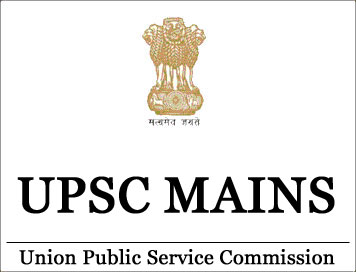
(Download) UPSC IAS Mains Optional Public Administration
(Paper -1) Exam
Paper - 2016
Exam Name: UPSC IAS Mains
Year: 2016
Exam Date: 9-12-2016
File Type: PDF
SECTION-A
Answer the following Questions in about 150 words each:
Q.1)
a) “Taylorism is considered very controversial despite its popularity.”
(Stephen P. Waring) Comment.
b) “Public Administration is the translation of politics into reality that
citizens see everyday.”(Donald F. Kettl and James W. Fesler) Explain.
c) “Morale can drive an organization forward or can lead to employees”
discontent, poor job performance and absenteeism”.
d) “The autonomy of Public Corporations raised a great debate about their
internal working and external relatin with the Ministers and the Parliament.”
e) “In spite of certain advantages, Social Audit arrangements have mostly been
ineffective because there is no legal provision for punitive action.”
Q.2)
a) “Douglas McGregor’s Theory X and Theory Y describe two contrasting models
of workforce motivation applied by managers in an organization.” Examine.
b) “The New Public Administration has seriously jolted the traditional concepts
and outlook of the discipline and enriched the subject by imparting wider
perspective by linking it closely to the society.” (Felix A. Nigro and Lloyd G.
Nigro) Elucidate.
c) “The central concern of Administrative Law has been the legal limitation of
administrative discretion.” Give reasons.
Q.3)
a) “if the Regulatory Commissions…..are wholly independent, they are
completely irresponsible for the doing of very important policy determining and
Administrative work ….. on the other hand, to rob the commissions of their
independence is seriously to menace the impartial performance of their judicial
work.” (Cushman) Examine.
b) “Goood governance is ensuring respect for human rights and strengthening
democracy, promoting transparency and capacity in Public Administration.” (Kofi
Annan) In the light of the statement, critically examine the criteria of good
governance as provided by United Nations and Nayef Al-Rodhan.
c) “The legislative control over administration is not as effective as it ought
to be”.
Q.4)
a)”Blake and Mouton defined leadership styles based on two dimensions-concern
for people and concern for production.” In the light of statement, discuss the
Managerial Grid Model. Explain with reason which one of the styles is the best.
b) “ bureau-Shaping Model has been developed as a response to the
Budget-Maximizing Model.”
c) “Civil Society performs a key role in defending people against the state and
market and in asserting the democratic will to influence the State”. Analyze the
statement with suitable
SECTION-B
Answer the following questions in about 150 words each:
Q.5)
a) “Training is considered as paid holidays.” Comment.
b) “Public Borrowing produces different effects on the economy.” Examine.
c) “Self-Help Groups are considered as one of the most significant tools to
adopt participatory approach for economic empowerment of women”. Comment.
d) “Riggs observed that three ‘trends’ Could be discerned in the comparative
study of Public Administration.” Discuss.
e) “In Public Policy Marking, ‘Rationalism’ is the opposite of ‘incrementalism’.”
Q.6)
a) “Fred Riggs continuously changed his theory in order to create the perfect
model.” Comment.
b) “The idea of development stands like a ruin in the intellectual landscape’
and “It is time to dismantle this mental structure”. (Wolfgang Sachs) In the
light of the statement, Critically examine the anti-development thesis.
c) “Information Technology brings efficiency and transparency to Public
Administration.” Examine the statement with suitable examples.
Q.7)
a) “Fiscal policy and monetary policy are the two tools used by the state to
achieve its macroeconomic objectives.” Examine the statement and point out the
differences between the tools.
b) “A central reason for utilization of Performance Appraisal is performance
improvement of the employees.” In the light of the statement, analyze the needs
of Performance Appraisal in an organization.
c) “The problem is to achieve the right balance between a competitive market
economy and an effective state: Markets where possible, the state where
necessary.” Justify your answer.
Q.8)
a) “The key to understanding performance-based budgeting lies beneath the
word ‘result’ ”. In the light of the statement, examine the elements of
performance-based budgeting.
b) “Disciplinary action may be informal and formal.” Explain and point out the
provisions made in the Constitution or Statute to check the misuse of power to
take disciplinary action.
c) “The term ‘work study’ may be used in narrower and wider senses.” Elucidate.